Kenworth T660s with PACCAR MX Engines Help Carrier Achieve Superior Fuel Economy, Retain Drivers
When talking about fuel economy, Aaron Thompson can't help but crack a million-dollar smile.
It's a matter of doing the math and counting the zeroes. But when you add it all up, Liberty, Mo.-based American Central Transport (ACT) is now saving more than $1 million a year in fuel costs. The savings come from a comprehensive plan, which has elevated the average fuel economy of its fleet from a very respectable 6.4 to an eye-popping 7.7 mpg. What's more, even better numbers may lie ahead, as ACT's top performing driver recently recorded an 8.3 mpg average.
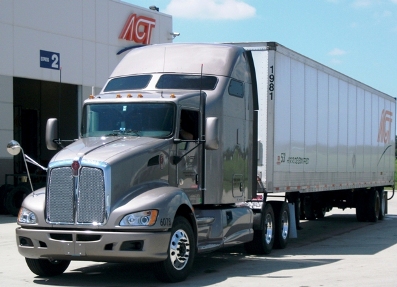
With a 99-percent on-time delivery rate, ACT is a premium service dry van carrier serving major shippers throughout the eastern half of the United States. It operates 100 company trucks, and has 200 independent contractors pulling trailers.

The main catalyst for fuel economy change has been the fleet's Environmental Protection Agency (EPA) SmartWay(SM) Designated Kenworth T660s with PACCAR MX engines.

Aaron Thompson,vice president of operations for American Central Transport
"We've been running Kenworth T660s since they were introduced to the market," said Thompson, who serves as vice president of operations for ACT. "Currently we have 185 T660s, with the balance of our fleet being other Kenworth models. We also have another 50 T660s on order this year."
All told, ACT ran 32 million miles in 2011, with 11 million of those coming from the company's trucks. "When you figure that diesel averages around $3.80 a gallon, you can see why we're getting the big numbers in fuel savings," Thompson said.
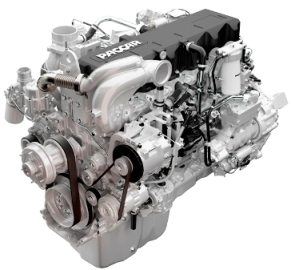
The T660s are spec'd with PACCAR MX 12.9-liter 455 hp engines. A test fleet for the PACCAR MX engine over the past few years, the company was among the first to put in a large order as soon as production engines became available.
"We like the PACCAR MX engine and spec for maximum fuel economy with progressive shift and geardown protection on the engine," said Thompson. "With 13-speeds, lightweight aluminum wheels, smaller tanks, wide-based tires and dead axle tandems (6 x 2), we're pushing 8 mpg on a regular basis in the Kenworth T660s."
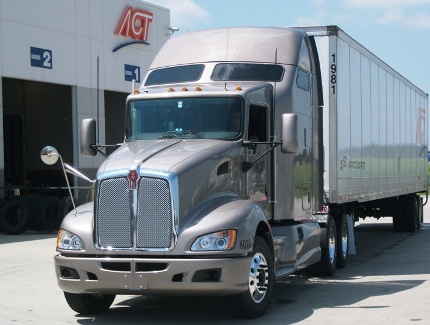
To help get the most of the Kenworth T660s, ACT now governs the tractors at 65 mph, where in 2006 they were limited to 70 mph, said Thompson. "And our idle time, thanks to APUs, has been greatly reduced - coming in at less than 3 percent on our company fleet."
ACT's policy of hiring only the best drivers means maintaining a newer fleet of quality, comfortable, high-performance trucks that attract top drivers. "Drivers really appreciate the solid cab on the T660," said Thompson. "We don't have creaks and shakes and rattles. We spec the Diamond interior because drivers like the button-tuck look, the new dash and the quiet ride. Drivers really, really like the cabs."
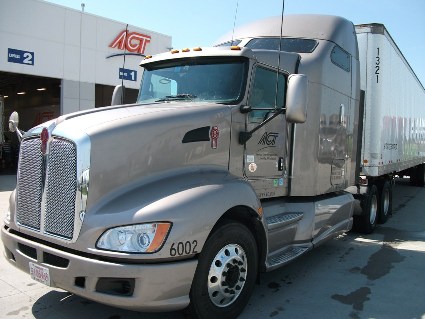
With a turnover rate of less that 60 percent - excellent when you take into account the drivers are on the road two- to three weeks at a time - ACT has instituted a progressive Performance Based Pay system. Simply perform and you get rewarded. Metrics include equipment utilization (the more miles driven, the better the pay); fuel economy (scored against their peers on a 6-month average); service (on time pick-up and delivery performance); safety (accidents/incidents and roadside violations); fuel optimizer (stopping at the fuel stops and keeping to the route the company has set up; this ensures paying the lowest prices for fuel).
The company uses performance monitoring software to track and trend its fleet's fuel performance. The software allows them to closely monitor such things as: time in top gear; time in cruise control; over RPM and over speed; idle time and mpg.
"This data is all used to coach and counsel drivers as to how best to improve their fuel economy performance," said Thompson. "The company tracks performance of all drivers and posts results by truck number each week. Drivers can then compare how they're doing versus their peers."
ACT also has the "7-Up Club." This is quarterly recognition (with hat pins and other items) for drivers who achieve an average of 7 mpg or better.
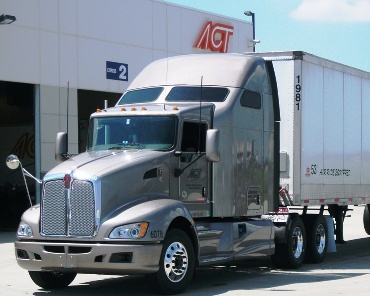
Normally on a three-year trade-in cycle, ACT extended the cycle to four years when the recession hit. "We weren't running the miles and it didn't make sense to trade off a truck that only had 300,000 miles," says Thompson. "We ran those trucks a year longer than we normally do and it didn't cost us. The trucks' value outpaced the market for that year. The testament to that is our four-year-old Kenworths are gold in the marketplace."
"Essentially, we ran those trucks for free for a year. We didn't take any hit to the cost of ownership because the maintenance costs maintained where they were at three years. In terms of overall quality and reliability, the trucks hold up fantastically. The guys who bought those Kenworth trucks paid top dollar because it is a low-cost-of-ownership truck. Kenworth trucks are built very well, and they hold their value."
Kenworth Truck Company is the manufacturer of The World's Best® heavy and medium duty trucks. Kenworth is an industry leader in providing fuel-saving technology solutions that help increase fuel efficiency and reduce emissions. The company's dedication to the green fleet includes aerodynamic trucks, compressed and liquefied natural gas trucks, and medium duty diesel-electric hybrids. Kenworth is the only truck manufacturer to receive the Environmental Protection Agency's Clean Air Excellence award in recognition of its environmentally friendly products. In addition, the fuel-efficient Kenworth T700 equipped with the low-emission PACCAR MX engine was named the 2011 Heavy Duty Commercial Truck of the Year by the American Truck Dealers. Kenworth is also the recipient of the 2011 J.D. Power and Associates award for Highest in Customer Satisfaction for Heavy Duty Truck Dealer Service. Kenworth's Internet home page is at www.kenworth.com. Kenworth. A PACCAR Company.
